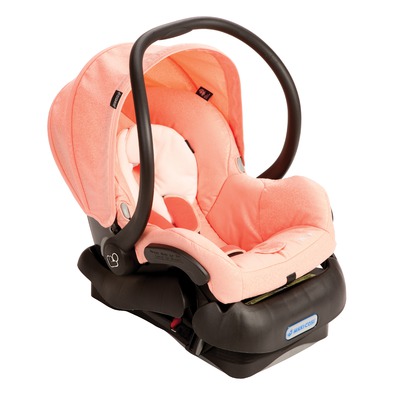Being a first-time mom can be quite daunting. Your new-born is fragile and special precautions need to be taken at all times. Travelling is the biggest mission for moms; after all the roads are a tough place to be in even for adults. When you move around with your baby, you need to make sure that the little one is comfortable and safe and that the best care is taken to make sure that destinations are reached without any glitches. Car seats are quite pricey and often it’s hard for moms to know what takes priority when shopping for these.
From April 2015, South African motorists are going to have to take a more serious approach to road safety. The Department of Transport has published amendments to the National Road Traffic Regulations 2000 under the National Road Traffic Act, 1996. The department is urging parents to invest in car seats and proper restraints for a child to be kept in while driving.
There are two types of car seats new moms can choose from, both with different benefits. You can either go for the infant car seat or the convertible car seat.
Infant car seats
This is a rear facing seat that is compact and specifically manufactured to accommodate infants. It is lightweight and flexible in terms of mobility. These are for children up to 13 kg of weight which is roughly 6 months to 12 months.
Pros:
- These seats are smaller and lighter than the convertible car seats and usually come with a handle, so they are easier to carry around. You can transfer them from the car to a stroller. Moms love the fact that you can also take this seat in and out of the car without waking up its little occupant.
- Infant car seats are specifically contoured to make sure that an infant fits in comfortably in them.
- They are easy to install. They can snap in and out of a base you install in the car and in and out of your stroller.
Cons:
- The disadvantage of an infant car seat is financial. When your child outgrows it, you’ll have to buy a convertible model. Larger babies may outgrow the seat long before age 1, while smaller babies may fit in the seat until their first birthday or beyond. It also becomes difficult to carry the baby around as they get bigger, because of their weight.
Convertible car seats
This is a forward facing seat that is designed for older babies. It is given a few add-ons to make it convertible from rear to forward facing and hence it acts as an infant car seat as well. It is suitable for kids from birth till 3 years old.
Pros:
- It’s cheaper to buy a convertible car seat for a new-born instead of starting with an infant car seat and then transitioning to a convertible. But experts say young babies are safer in an infant car seat. Many parents say their new-born seems to be swimming in a convertible seat and they have to use head rests, towels, or other cushioning to prop the baby safely in place until she or he grows into the seat.
Cons:
- Convertible seats are heavy. Unlike infant car seats, they have to be installed in the car rather than clicked into a base that’s installed in the car, so you can’t easily take them in and out of the car, carry your baby in them, or snap them into a stroller.
What’s important is to shop within your means and for your needs. Here are some questions you can ask yourself, which will help you determine which car seat fits your lifestyle best.
1. Is portability important to me?
If yes, you should most likely consider an infant car seat.
2. Do I want a fixed car seat?
In cases when you know that the baby will be travelling in a specific car, consider a convertible seat that will be permanently installed in the car. Then bear in mind that not all car seats fit in all cars. Installation differs with each car seat.
4. Will this seat work with my stroller?
Infant car seats work well with strollers as they are easy to install in and out of the car.
5. Can I buy a second-hand car seat?
Experts advise against it, as you may not know the history of the car seat. It could have been previously involved in an accident. There is also a degree of wear and tear that may be on the second-hand seat, which then compromises the seat’s optimum efficacy.











